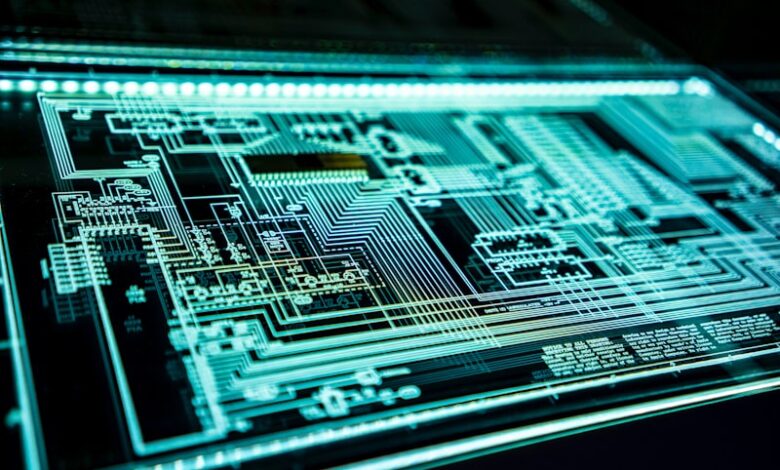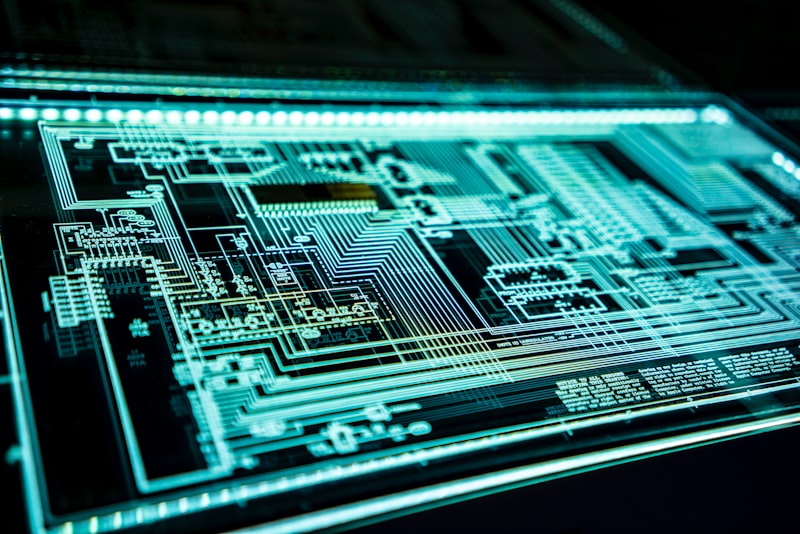Industry 4.0 and Smart Production Processes

In today’s rapidly evolving world, innovation has become the driving force behind various industries. One such transformation that holds immense promise is Industry 4.0, a term coined to describe the fourth industrial revolution. This revolution brings together cutting-edge technologies and smart production processes to reshape the manufacturing landscape.
At its core, Industry 4.0 represents the integration of digital technologies into traditional manufacturing practices. It combines the power of automation, artificial intelligence, the Internet of Things (IoT), data analytics, and cloud computing to create interconnected systems that communicate and cooperate with one another. The goal is to enhance efficiency, productivity, and flexibility in the manufacturing sector.
With Industry 4.0, smart production processes take center stage. These processes leverage advanced technologies to optimize operations throughout the entire value chain. Imagine a factory where machines are seamlessly connected, constantly exchanging real-time data, and making autonomous decisions to streamline production. This level of connectivity enables manufacturers to achieve new heights of productivity and responsiveness.
One key aspect of Industry 4.0 is the concept of cyber-physical systems (CPS). CPS refers to the integration of physical machinery and digital systems, resulting in intelligent manufacturing environments. Through CPS, machines can be equipped with sensors and actuators, enabling them to collect and analyze data, make informed decisions, and even communicate with other machines. This transformative capability allows for predictive maintenance, improved resource allocation, and optimized production cycles.

Moreover, Industry 4.0 opens doors to the possibilities presented by big data analytics. The vast amounts of data generated by interconnected systems can be harnessed to gain valuable insights and drive informed decision-making. By analyzing this data, manufacturers can identify patterns, detect inefficiencies, and predict maintenance requirements, all in real-time. Such actionable intelligence empowers businesses to optimize their production processes, reduce downtime, and minimize costs.
Industry 4.0 and smart production processes are revolutionizing the manufacturing industry. By leveraging technologies like automation, AI, IoT, data analytics, and CPS, manufacturers can unlock unprecedented levels of efficiency, productivity, and competitiveness. Embracing this paradigm shift is essential for businesses to thrive in the ever-evolving landscape of the fourth industrial revolution. Are you ready to step into the future of manufacturing with Industry 4.0?
Revolutionizing Manufacturing: How Industry 4.0 is Transforming Smart Production Processes
Are you ready to witness the next industrial revolution? Brace yourself as we delve into the captivating world of Industry 4.0 and its profound impact on smart production processes. In this article, we will explore how this revolutionary concept is turning traditional manufacturing on its head, paving the way for a new era of efficiency, automation, and interconnectedness.
Picture a factory where machines communicate seamlessly with each other, making decisions in real-time and optimizing operations without human intervention. This is the essence of Industry 4.0, a term coined to describe the convergence of digital technologies and traditional manufacturing processes. With the advent of the Internet of Things (IoT), artificial intelligence (AI), and big data analytics, the manufacturing landscape has undergone a dramatic transformation.

In this brave new world, smart factories are equipped with sensors that collect vast amounts of data from every nook and cranny of the production line. These sensors serve as the eyes and ears of the operation, feeding real-time information to an intelligent network that orchestrates the entire manufacturing process. By analyzing this data, manufacturers can identify bottlenecks, predict maintenance needs, and optimize workflows, all in a bid to achieve unparalleled levels of productivity and cost-efficiency.
Gone are the days of rigid assembly lines and siloed processes. The Industry 4.0 revolution embraces flexibility and customization like never before. Thanks to advanced robotics and automation, manufacturers can quickly adapt their production lines to meet changing market demands. Imagine a factory where robots work alongside humans, collaborating effortlessly and enhancing overall productivity. This collaboration between man and machine not only streamlines operations but also frees up human workers to focus on more complex tasks that require creativity and problem-solving skills.
Furthermore, Industry 4.0 brings forth the power of connectivity. Through a web of interconnected devices and systems, manufacturers can achieve end-to-end visibility and control over their production processes. This interconnectedness enables seamless communication between suppliers, manufacturers, and customers, facilitating real-time monitoring, demand forecasting, and supply chain optimization.
Industry 4.0 is revolutionizing manufacturing by integrating cutting-edge technologies into traditional production processes. From autonomous systems and data analytics to robotics and IoT, this new industrial paradigm promises enhanced efficiency, customization, and connectivity. As smart factories become the norm, businesses that embrace this transformation will gain a competitive edge in the ever-evolving global marketplace. So, are you ready to embark on this transformative journey towards a smarter future of manufacturing? The possibilities are endless, and the revolution has just begun.
From Automation to Augmentation: Unleashing the Power of Industry 4.0 in Smart Factories
Are you ready to be amazed by the incredible revolution happening in the world of manufacturing? Get ready to dive into the realm of Industry 4.0 and discover how it’s transforming smart factories from mere automated systems into powerful augmented environments. In this article, we’ll explore the wonders of Industry 4.0 and its impact on the manufacturing landscape.
Gone are the days when factories relied solely on automation to streamline their operations. With Industry 4.0, a new era has dawned, where machines and humans collaborate in unprecedented ways. It’s no longer about replacing human workers with robots; it’s about empowering them with advanced technologies to achieve greater efficiency and productivity.
Imagine a factory floor bustling with intelligent robots working side by side with skilled human operators. These robots, equipped with sensors and connected through the Internet of Things (IoT), can communicate and share information in real-time. They can perform repetitive tasks with unparalleled precision, freeing up human workers to focus on more complex, creative, and critical activities.
Industry 4.0 brings forth a plethora of cutting-edge technologies that enable these smart factories to operate at peak performance. Artificial Intelligence (AI) plays a key role in analyzing vast amounts of data collected from sensors and machines, providing valuable insights for optimizing production processes. Machine Learning algorithms continuously learn and adapt, improving efficiency over time.
But it doesn’t stop there. Augmented Reality (AR) takes center stage, bridging the gap between the physical and digital realms. Workers wearing AR glasses can receive real-time instructions, visualize complex assembly processes, and access relevant data without the need for bulky manuals or computer screens. This seamless integration enhances worker capabilities, reduces errors, and accelerates training processes.
With all these advancements, Smart Factories become agile, flexible, and responsive to dynamic market demands. The power of Industry 4.0 enables manufacturers to customize products on-demand, catering to individual customer preferences. This level of personalization was previously unimaginable, but now it’s becoming a reality thanks to the fusion of automation and augmentation.
Industry 4.0 marks a paradigm shift in manufacturing, transforming traditional factories into intelligent ecosystems. The collaboration between humans and machines unlocks unprecedented productivity and unleashes the full potential of smart factories. Embracing this revolution empowers manufacturers to stay competitive in an ever-evolving global market landscape. So, fasten your seatbelts and get ready for an awe-inspiring journey into the future of manufacturing!
Unlocking Efficiency and Innovation: Exploring the Impact of Industry 4.0 on Production Processes

We live in an era where technology is advancing at an unprecedented pace, transforming the way industries operate. One prominent revolution is Industry 4.0, which encompasses the integration of automation, data exchange, and cutting-edge technologies in manufacturing processes. This paradigm shift has a profound impact on production processes, unlocking new levels of efficiency and fostering innovation.

When we talk about Industry 4.0, we are referring to a combination of emerging technologies such as the Internet of Things (IoT), artificial intelligence (AI), robotics, and big data analytics. These advancements empower manufacturers to create smart factories that are highly connected, automated, and intelligent. By embracing Industry 4.0, companies can optimize their production processes in ways that were previously unimaginable.
One of the key benefits of Industry 4.0 is increased efficiency. Through the use of real-time data collection and analysis, manufacturers gain valuable insights into their operations. This enables them to identify bottlenecks, streamline workflows, and make data-driven decisions to enhance productivity. For example, sensors embedded in machines can monitor performance metrics and send alerts when maintenance is required, preventing costly breakdowns and minimizing downtime.
Furthermore, Industry 4.0 drives innovation by fostering collaboration between humans and machines. With AI and robotics, repetitive and mundane tasks can be automated, freeing up human workers to focus on higher-value activities. This synergy between man and machine leads to the development of new products, services, and business models. Companies that embrace Industry 4.0 can tap into a world of possibilities, creating innovative solutions and staying ahead of the competition.
In addition, the adoption of Industry 4.0 enables customization and personalized production. Advanced technologies allow for mass customization, where products can be tailored to meet individual customer needs without sacrificing efficiency. With the help of AI algorithms, manufacturers can gather customer insights and preferences, enabling them to produce customized products at scale. This level of personalization not only enhances customer satisfaction but also opens up new market opportunities.

The advent of Industry 4.0 has revolutionized production processes, unlocking efficiency and fostering innovation. By leveraging technologies such as IoT, AI, and robotics, manufacturers can optimize their operations, drive collaboration between humans and machines, and offer personalized products to customers. The impact of Industry 4.0 goes beyond increased productivity; it paves the way for a new era of manufacturing, where creativity and technology converge to shape the future.
The Rise of Cyber-Physical Systems: How Industry 4.0 is Reshaping Manufacturing
Are you ready for a revolution in the manufacturing industry? Industry 4.0 is here, and it’s transforming the way we produce goods. With the rise of cyber-physical systems, traditional manufacturing processes are being reshaped, paving the way for greater efficiency, productivity, and innovation.
So, what exactly are these cyber-physical systems that are causing such a buzz? Imagine a world where machines communicate with each other, collect vast amounts of data, and make intelligent decisions on their own. That’s the essence of cyber-physical systems (CPS). They combine physical elements, like machines and equipment, with advanced technologies such as artificial intelligence, cloud computing, and the Internet of Things (IoT).
By integrating these technologies, CPS enables seamless communication and coordination between machines, humans, and the digital realm. This interconnectedness creates a powerful ecosystem that drives automation, predictive maintenance, real-time monitoring, and adaptive production. It’s like having a team of smart robots working collaboratively alongside humans to optimize production processes.
Industry 4.0’s impact on manufacturing is remarkable. With CPS, factories can achieve higher levels of productivity and flexibility. Machines equipped with sensors and actuators can monitor their own performance, detect anomalies, and take corrective actions without human intervention. This predictive maintenance approach minimizes downtime, reduces costs, and extends the lifespan of equipment.
Moreover, CPS empowers manufacturers to embrace mass customization. By capturing and analyzing vast amounts of data from various sources, companies can gain valuable insights into customer preferences, market trends, and supply chain dynamics. Armed with this information, they can tailor products to individual customer needs while maintaining cost-effective production.
Another benefit of CPS is enhanced worker safety. Collaborative robots, also known as cobots, work side by side with humans, handling repetitive or hazardous tasks. These robots are designed to assist workers, complementing their skills and capabilities. This human-robot collaboration not only improves safety but also increases efficiency, as tasks can be performed with greater precision and speed.
The rise of cyber-physical systems under the umbrella of Industry 4.0 is revolutionizing manufacturing. Through seamless integration of physical elements and advanced technologies, CPS enables automation, predictive maintenance, real-time monitoring, and adaptive production. The result? Increased productivity, flexible customization, improved worker safety, and ultimately, a more efficient and innovative manufacturing industry. Brace yourself for the transformative power of Industry 4.0!




